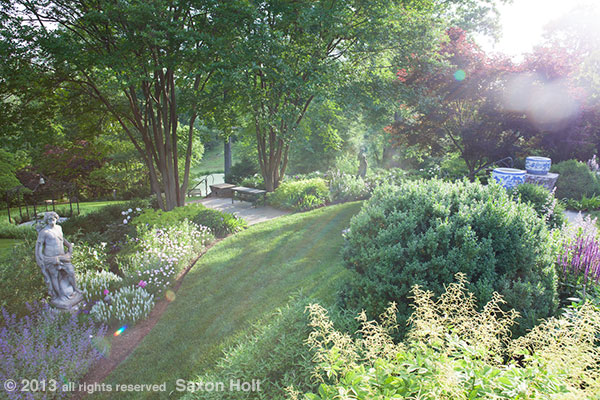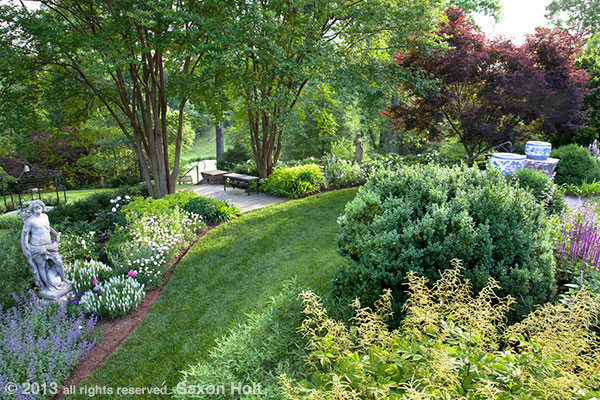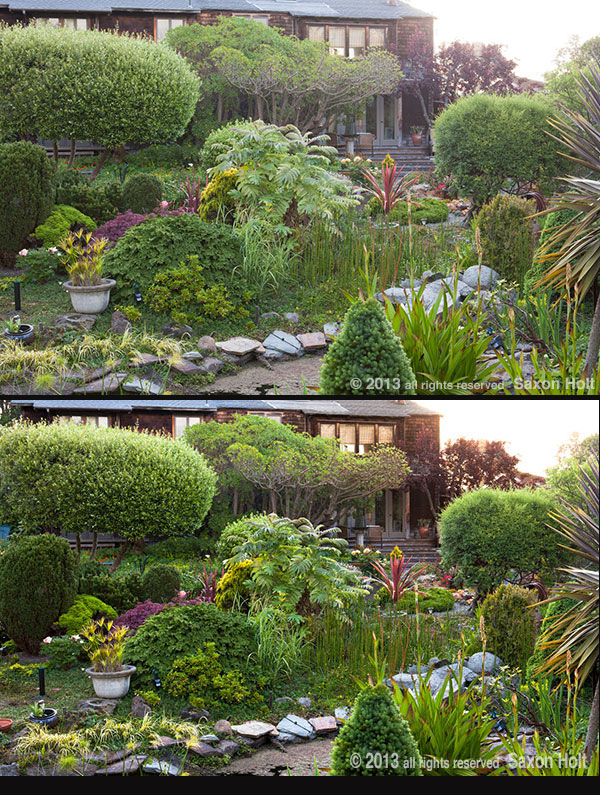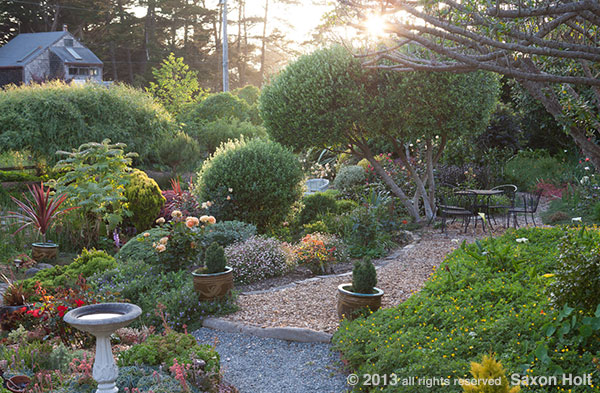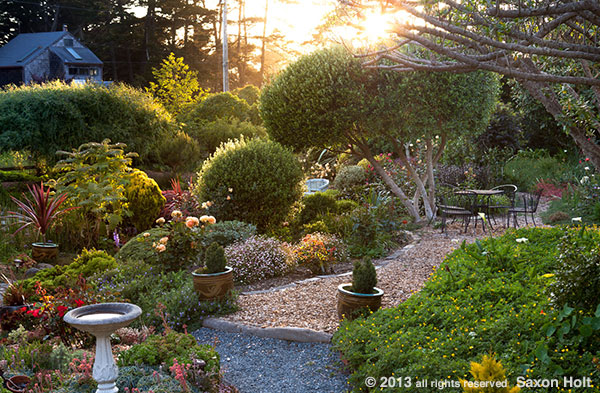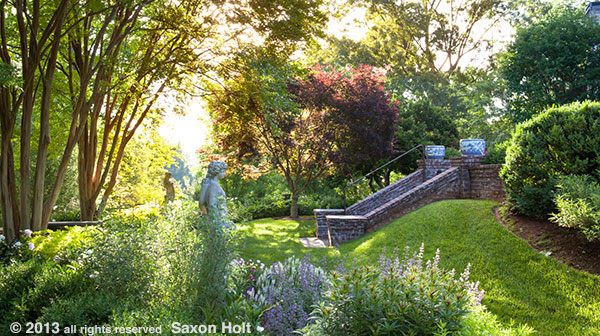At one point or another all garden photographers will have to deal with lens flare. Too much strong directional light will cause the glass in the lens to disperse the light – flare, and affect the quality of the image.
The flare will wash out color and reduce contrast. It is not always so obvious as in this example, where I was very consciously playing with the sunlight to see how far I could push my lens. I was previsualizing a glorious sunrise moment and trying every trick I could think of. More at the end of the post.
The best defense against lens flare is a lens hood that is fitted for your lens. Or in the case of this photo, simply cupping your free hand (you are using a tripod, aren’t you ?) over the top of the lens will perform a bit of magic.
A fitted hood is a snoot for the lens that will be exactly the right size for the len’s focal length and prevent unwanted light from entering the camera. It is a very good idea to use one at all times because most of the time the affect of flare is subtle. It is an issue in almost any landscape photo that has any sky in it.
Don’t be fooled by advice to garden photographers to shoot in soft light and thus think overcast days or shady locations don’t have flare problem. Soft light is worse for flare than strong sunlight because it is not so obvious.
With strong sunlight it is often obvious when light streaks into a lens, but with soft light lens flare you won’t know you had a problem until you review the images later.
Flare is one reason why we don’t see a lot of published garden photos that use sky. Soft, bright sky is great for tonal range in a garden, but creates more havoc on the lens surface than blue sky. And flare is behind the old adage for amateur photographers to put the light over your shoulder and look away from it when you point your camera at the subject.
Not only is it hard for the camera to pick up the dynamic range between bright sky and shadow details, the strong light bounces around the glass inside a lens and washes out contrast, even in the best coated lenses.
In the above example, in Sally Roberson’s magical garden in Bolinas, even a small piece of bright morning sky causes problems. Again, my solution is my hand cupped just out of view above the lens. Note the much improved contrast in the house shingles and the much improved greens in the plants.
(I should note here that Sally Robertson is a phenomenal artist and amazing gardener. See her work here. Thank you Sally for allowing me to work in your own outdoor studio.)
I don’t use lens hoods because I change lenses a lot during a shoot, and when the light is critical I am working really fast and don’t have time to fuss with hoods. Besides, there is no room for all the different ones I would need in my camera vest.
In recent years I have been playing a lot more with light, especially strong light; looking toward the sun to see what happens. I really like the effect of back light in garden photography and lens flare comes with the territory.
It turns out looking into the sun you can sometimes get the starburst effect and flare is not as much a problem as one would think. I guess this is due to the strong pinpoint light coming directly into the lens instead of obliquely scattered by the glass.
There is a lot of post production computer time spent in bringing out the effect but for the right photo, the time is well spent. Flare can actually become an asset for revealing light.
In the e-book I will go into step by step detail of how this photo was “altered” to bring out what I wanted to see. I will say, the most important tool is the adjustment brush in Photoshop that allows you to selectively change areas of the photo in both density and color temperature. Note, for example, the house across the street is darker and more blue.
Remember that first garden where I was previsualizing an early morning garden filled with light? Two minutes after I took that first photo, I was moving fast, quickly looking for an angle to use the sun to best affect.
This is what I found, looking right into the sun. Flare where I want it.
Ahhh the light, the light ….

